
The Museum of Science and Technology is one of the museums in the Peter and Paul Fortress (Zayachy Ostrov) St. Petersburg.
The museum is partially interactive.
The museum is located in a historical building on the territory of the fortress-Naryshkin bastion, which was a defensive structure of the Peter and Paul Fortress, intended for conducting frontal and flanking fire.
Naryshkin bastion is decorated with a Flanking tower (Flag Tower), and on the roof of the bastion there is a panoramic route "Nevsky Panorama", which everyone can walk along. Learn more about Bastion…

The Museum of Science and Technology houses a collection of items related to various fields of technology and scientific knowledge - a kind of retrospective of household, measuring, computing, optical devices, vehicles and other technical devices used by St. Petersburg-Leningraders in their work and in everyday life from the mid-19th to the end of the 20th centuries.
The museum's exposition includes more than 600 exhibits from the Science and Technology Fund of the State Museum of History of St. Petersburg, whose collection includes more than 12,000 items.
The exposition of the Museum of Science and Technology is divided into three parts corresponding to the main sections of physics: "Mechanics", "Electromagnetism" and "Optics".
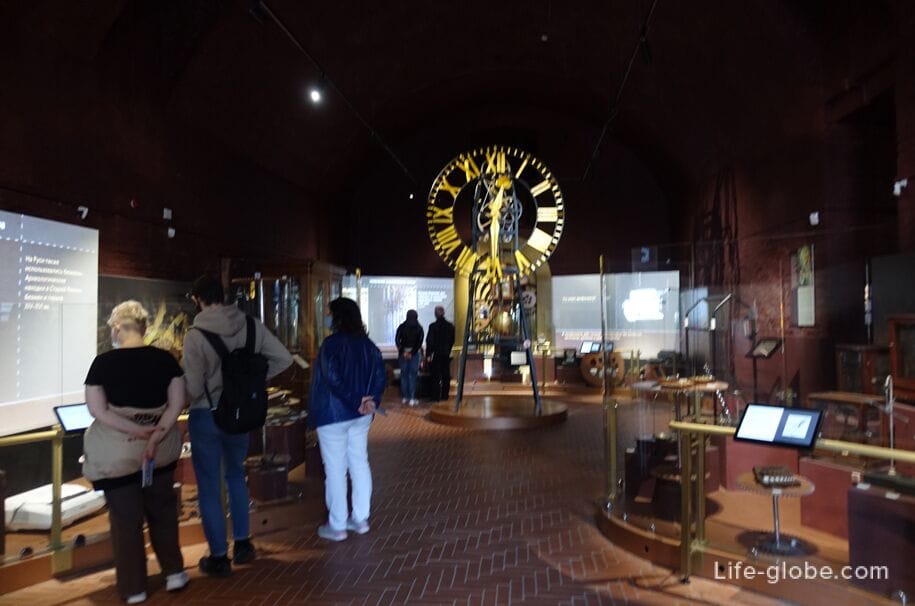
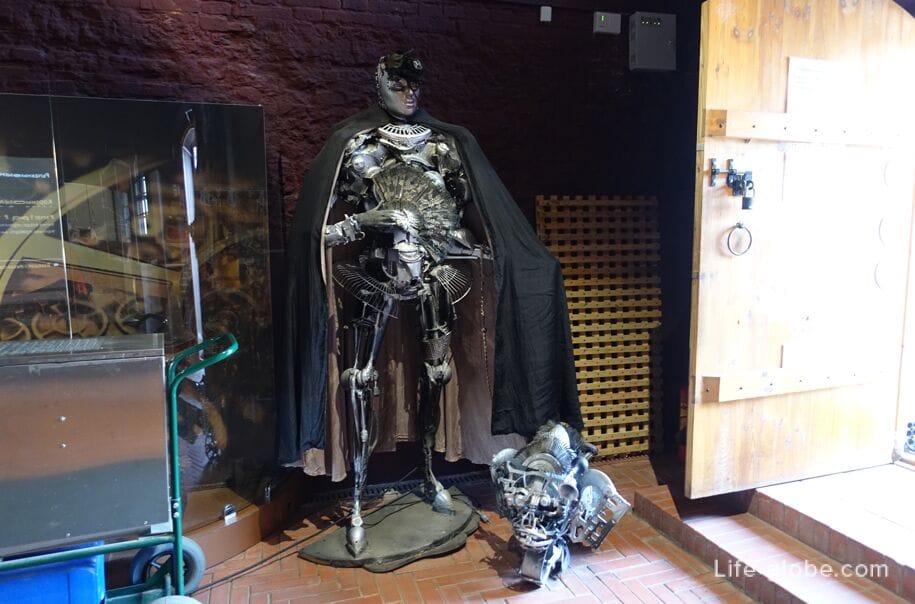
This section of the museum is dedicated to simple mechanisms: the lever and the gear train.
The principle of operation of the lever is demonstrated by scissors, pliers, meat grinders, nutcrackers, vegetable cutters, as well as scales of various modifications and purposes: pendulum, lever, spring, rocker.
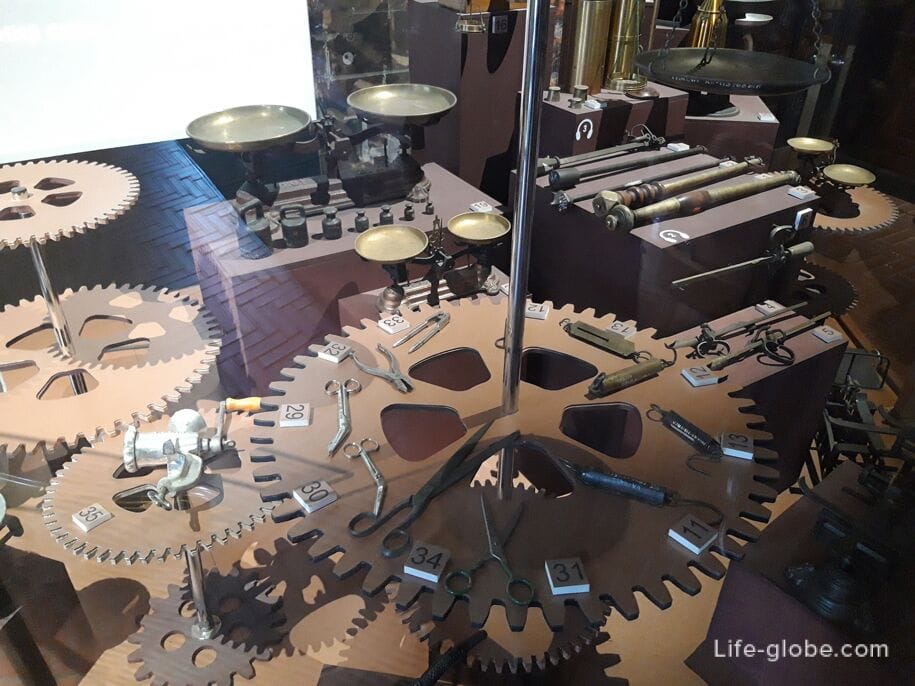
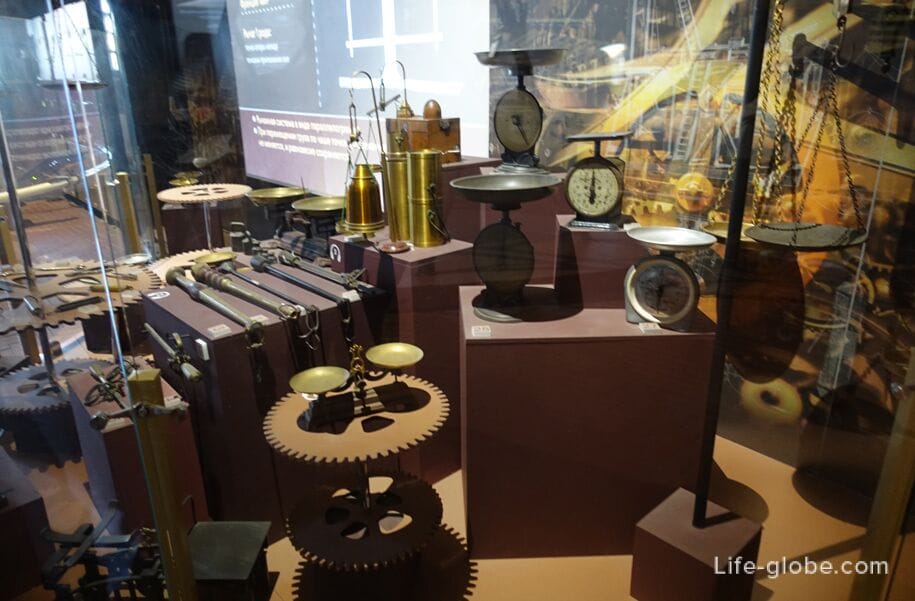
Scales for precious metals, 1861-1867.
The scales were purchased by the St. Petersburg Mint in 1875 from the outstanding English mechanic and inventor James Mrdock Napier. The creator of machines for weighing and counting metal money for the Royal Mint of Great Britain.
In 1861, Napier was invited to Russia and spent several months in St. Petersburg, drawing up a plan for the reorganization of the Mint. The lever scales he proposed were used at the St. Petersburg Mint until the late 1990s, when they were replaced by electronic scales.
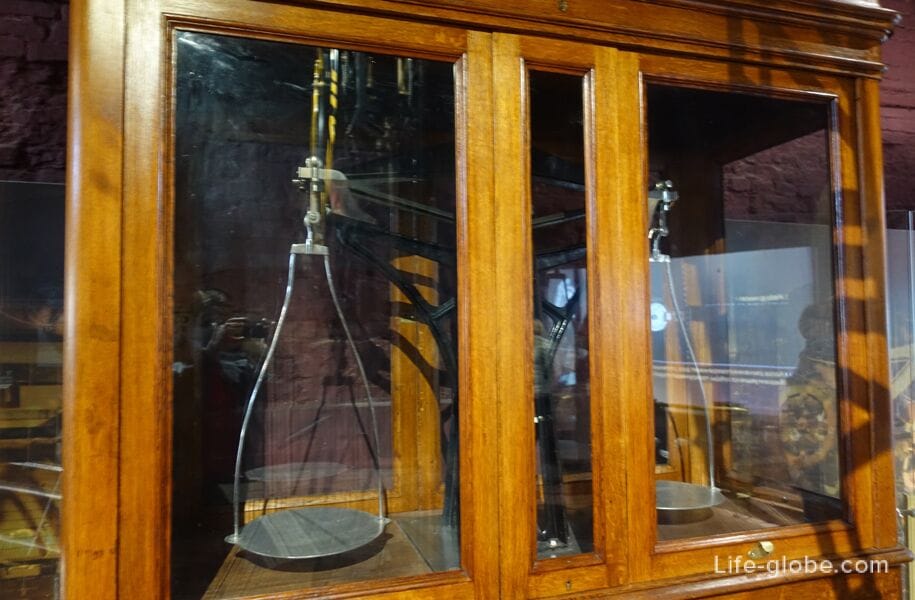
Wave pendulum (video).
The section visually (interactive exhibit) presents a system of 15 pendulums with suspensions of different lengths.
With the help of the bar, you can independently start the oscillations of all the pendulums at the same time, deflecting them by the same angle. The pendulum oscillates under the influence of gravity, elastic force and friction force. The vibration frequency depends on the length and the friction force. The frequency of vibrations depends on the length of the suspension-the longer the suspension, the slower the pendulum swings.
In the system presented in the museum, each pendulum begins to oscillate with its own frequency, and a wave effect occurs. During further oscillations of the pendulums, their energy is constantly transformed from kinetic to potential and vice versa. The maximum kinetic energy of the pendulum reaches at the moment of passing the lowest point, when its speed is maximum, and the maximum potential energy-at the points of the highest rise and stop.
Polispast (interactive exhibit).
A heavy bag is easier to carry together. The two handles work like the ends of a cable in a moving block: the weight of the load is distributed between the two points of force application. The block-one of the oldest simple mechanisms-is a disk with a chute for a rope. The fixed block has a fixed disk axis. It does not give a gain in power, but allows you to change the direction of its action to make it easier to move the load. The movable block rises and falls together with the weight suspended from it and, in accordance with the law of the lever, gives a double gain in force.
The museum presents a power polispast - a system of several movable and stationary blocks, which gives a significant gain in strength and allows you to change the direction and application of force. To see how it works, you can try to lift a heavy box of sand with it in the museum.
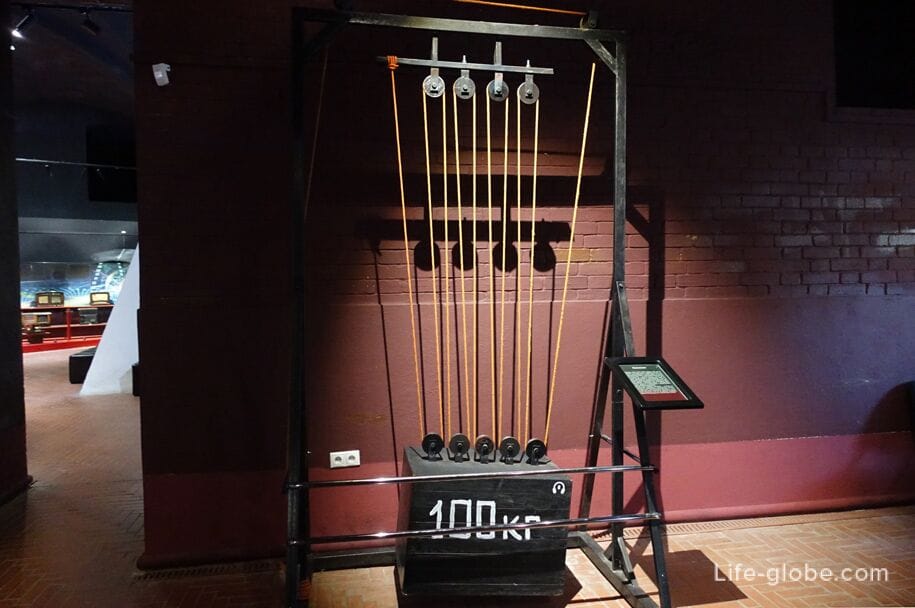
The clock mechanisms in the section show the action of the gear train.
The museum has a collection of clocks: table, floor, console, fireplace, alarm clock, pocket, wrist. Among which there are copies of the 18th century, created by the London masters of J. R. R. Tolkien. By Fenton and J. R. R. Tolkien. Dudds, the German company "Moser & Co", works of the St. Petersburg watch company P. Bure and the Erikson factory.
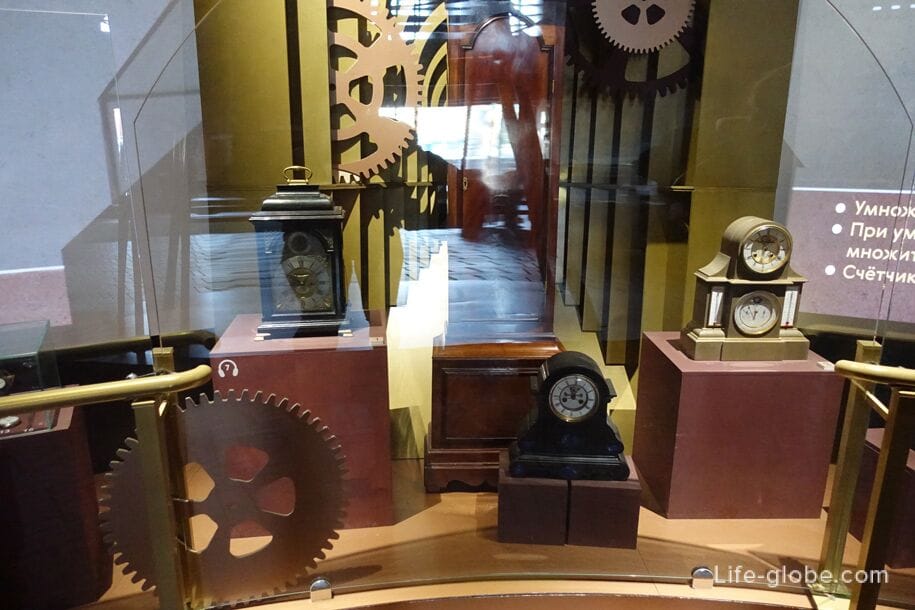
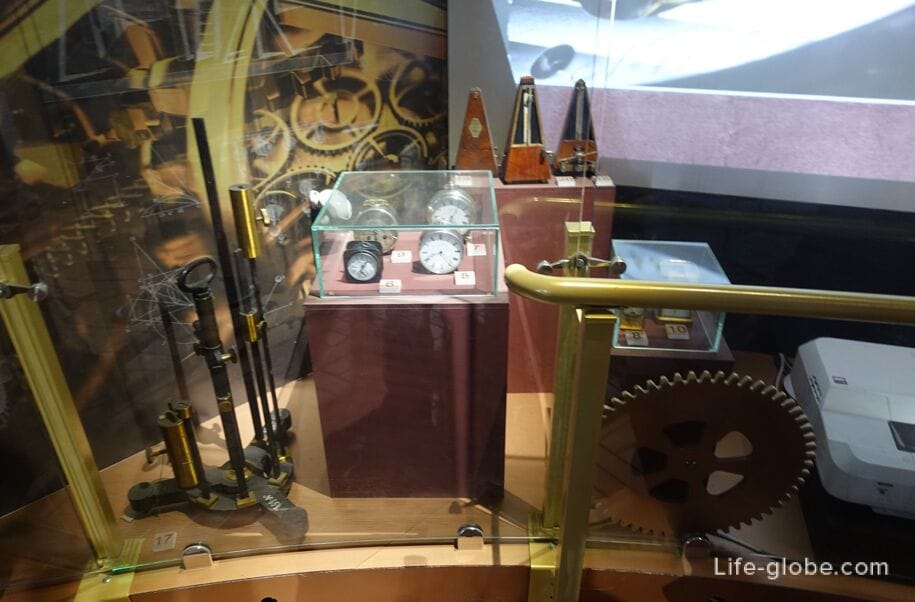
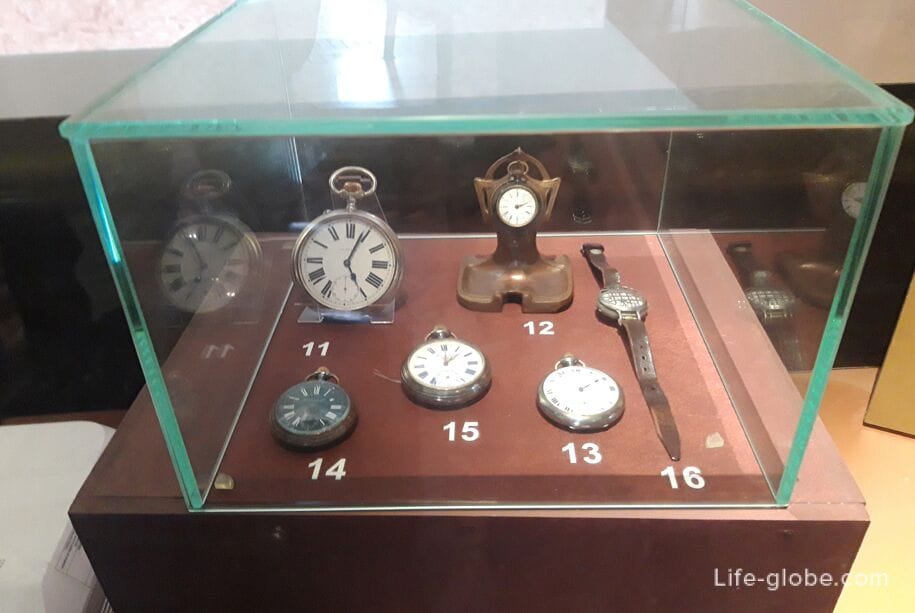
Skeleton watches.
The skeleton mechanical tower clock is the only device of its kind that has no analogues in the world. Their uniqueness lies in the fact that the watch is a completely transparent 4-meter movement with a two-meter dial. All this makes it possible to see through the moving parts of the working clock and get closer to understanding the principle of their operation.
The skeleton clock presented in the museum was made by a clock-clock engineer Peter and Paul Cathedral By Andrey Alexandrovich Kudryavtsev.

The hall also presents mechanisms combined with the presence of a lever of power: sewing machine a variety of designs and manufacturers, including the famous machines of the company "singer" (in St. Petersburg is the former singer house), adding machine adding machine the system of Chebyshev and system V. T. Odner; writing machine "underwood", "Minion", "Remington", "Smith Premier", "Leningrad", "Moscow" and others.
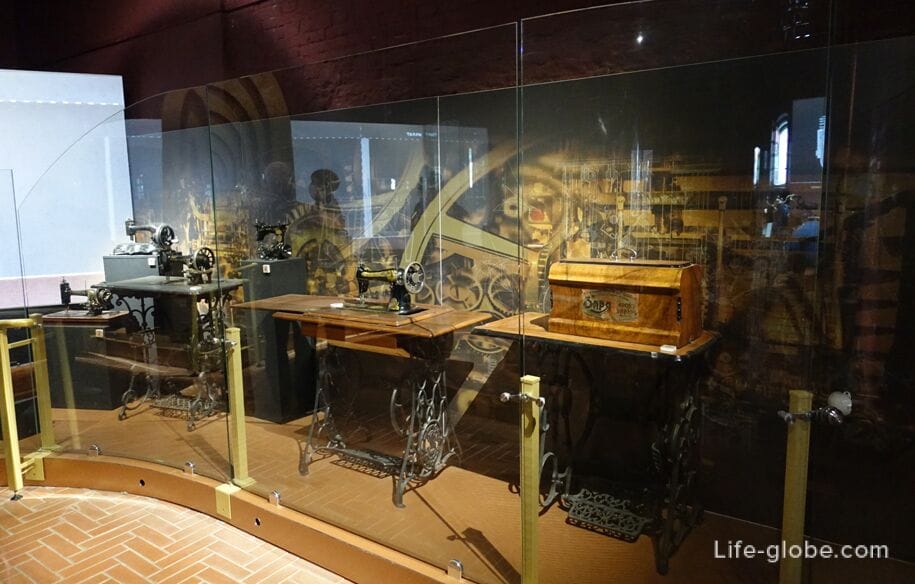
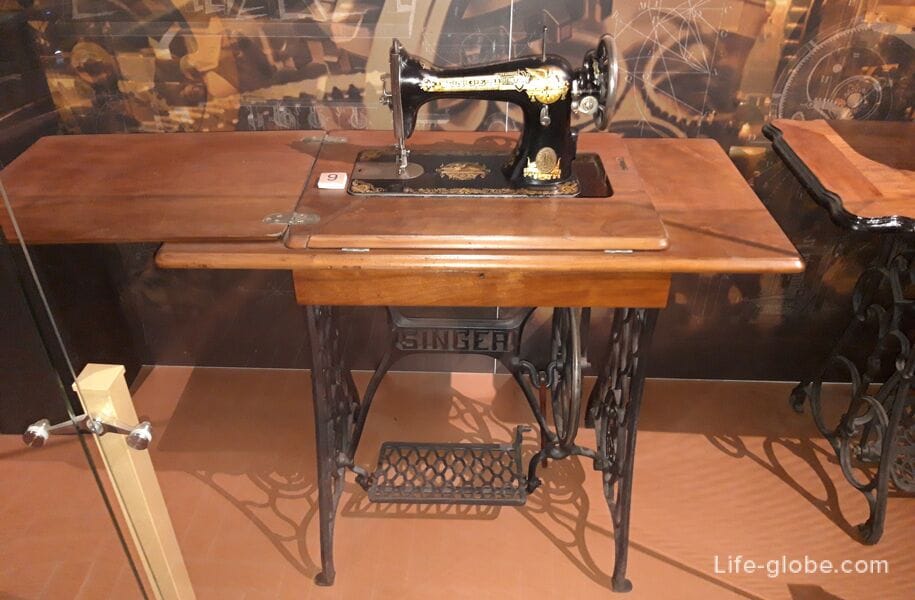
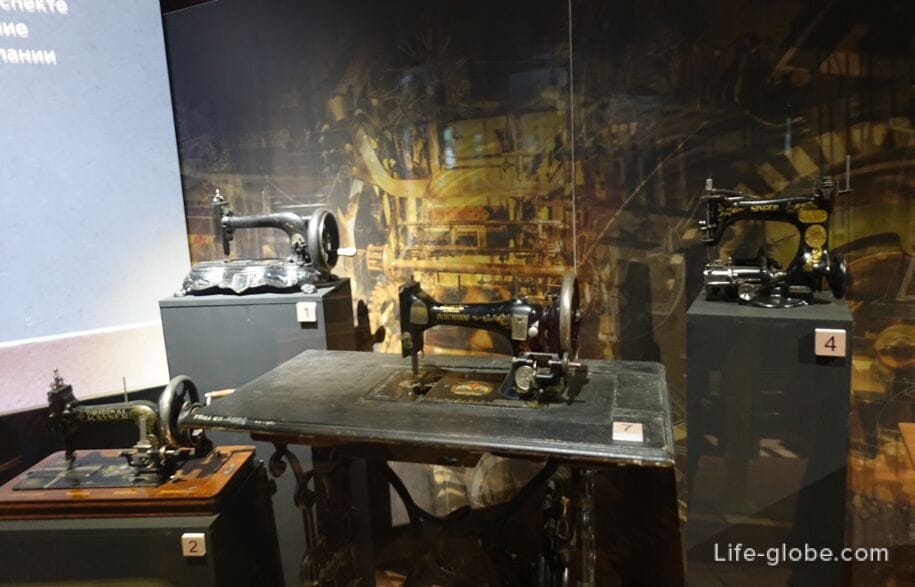
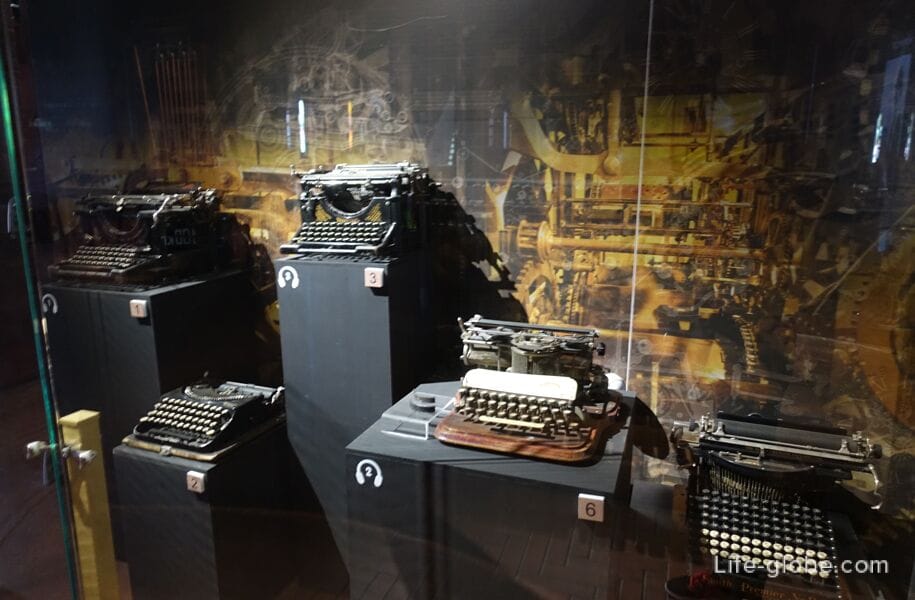


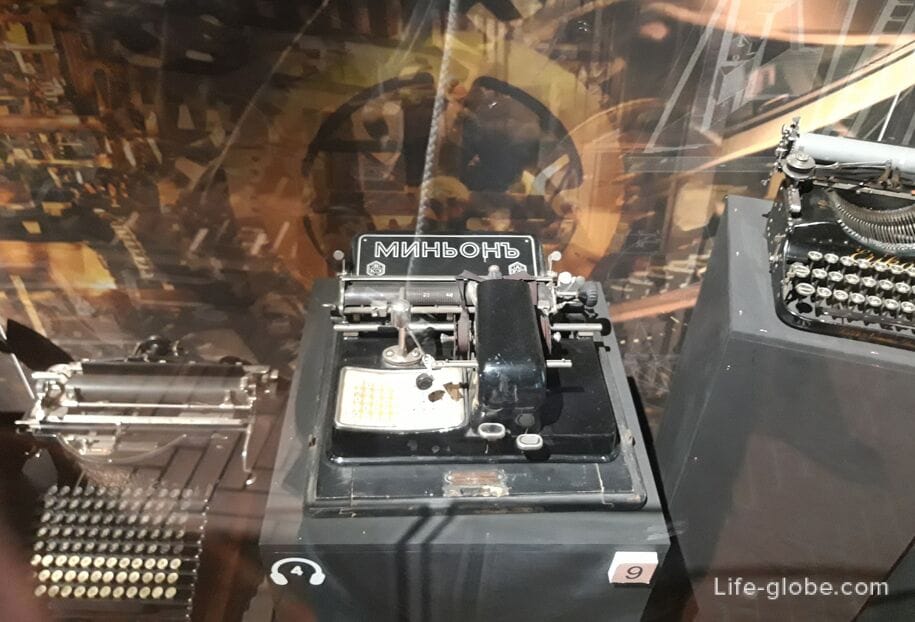
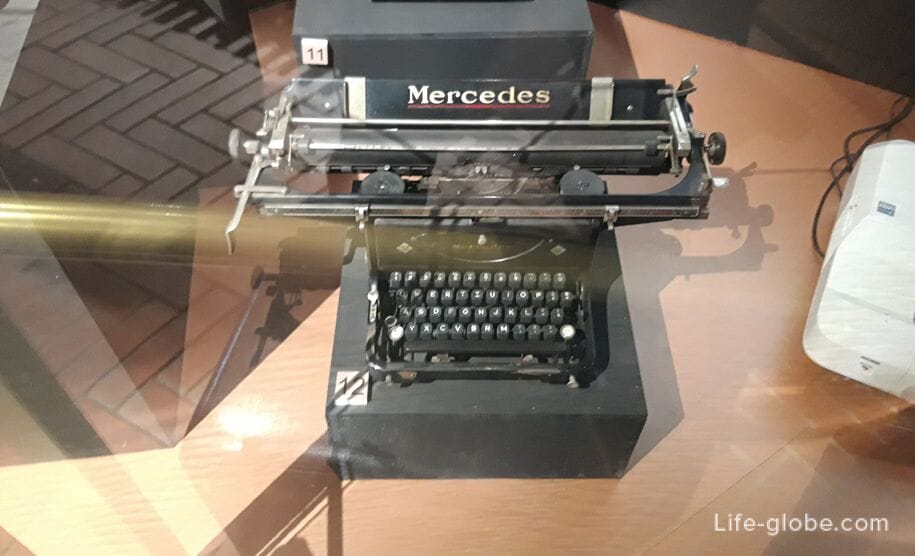
One of the most striking exhibits of the section is the keyboard of the carillon of the Peter and Paul Cathedral (Mechelen, Belgium, master Somers).

Internal combustion engine.

The exhibits of the hall tell about such phenomena as: electric current, electromagnetic vibrations and waves.
The main stages of the development of the theory of electromagnetism - the invention of the radio, the lamp triode, the transistor and the beginning of the era of wireless technologies-are shown on the example of the exhibits presented. Special attention is paid to the physical processes that occur during television transmission.
The section presents all kinds of measuring devices (voltmeters, ammeters, galvanometers, wattmeters, phasometers), microphones, loudspeakers, radios, radiols and tape recorders.
Interesting are the Morse telegraph machines of the early 20th century, telephones: from the Bell handset of the 1880s to the models of the 1970s and 1980s, telephone switches of the 1930s and 1940s.
A wide range of TVs produced in Leningrad is presented: from the very first models "Leningrad T-2", "KVN-49-4" to color TVs "Rainbow" and "Electronics".

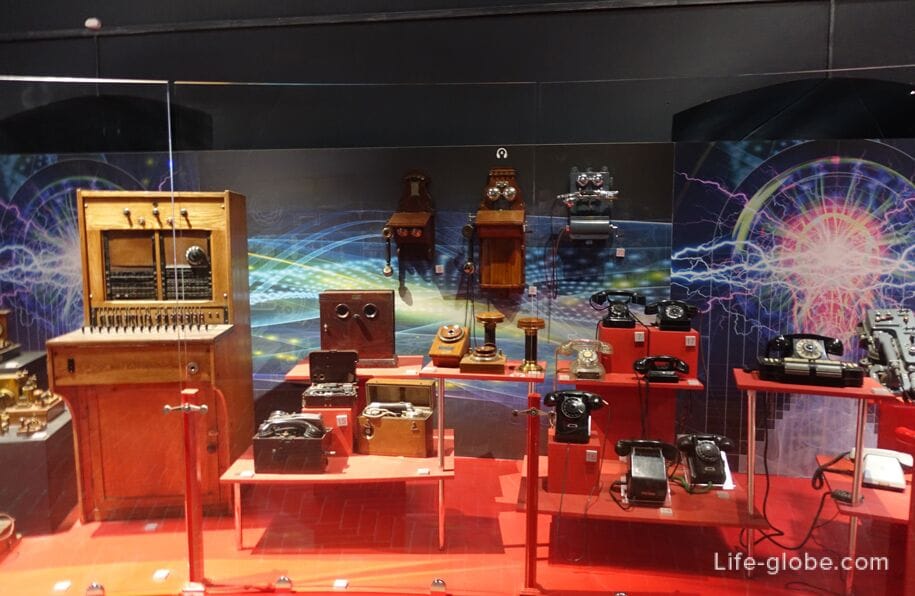

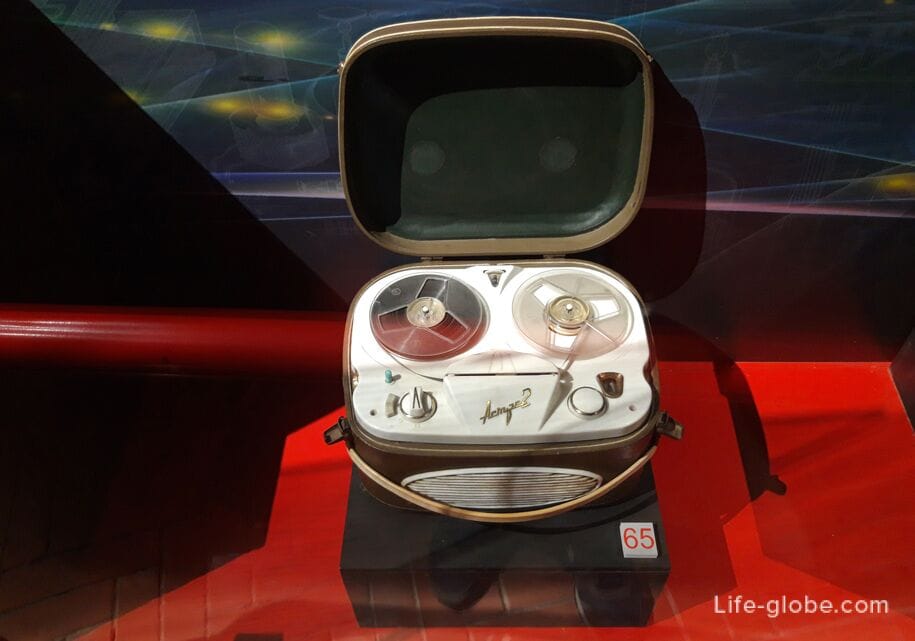
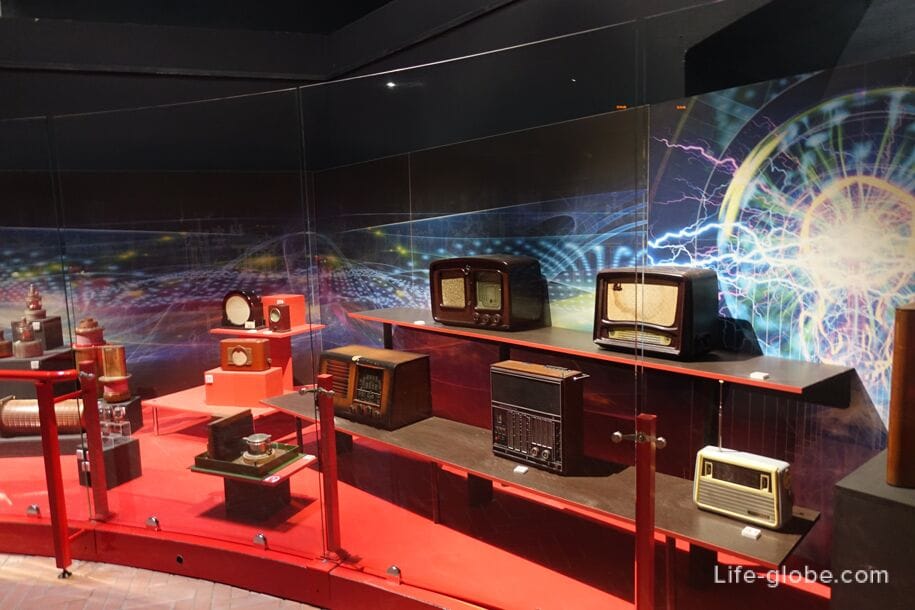
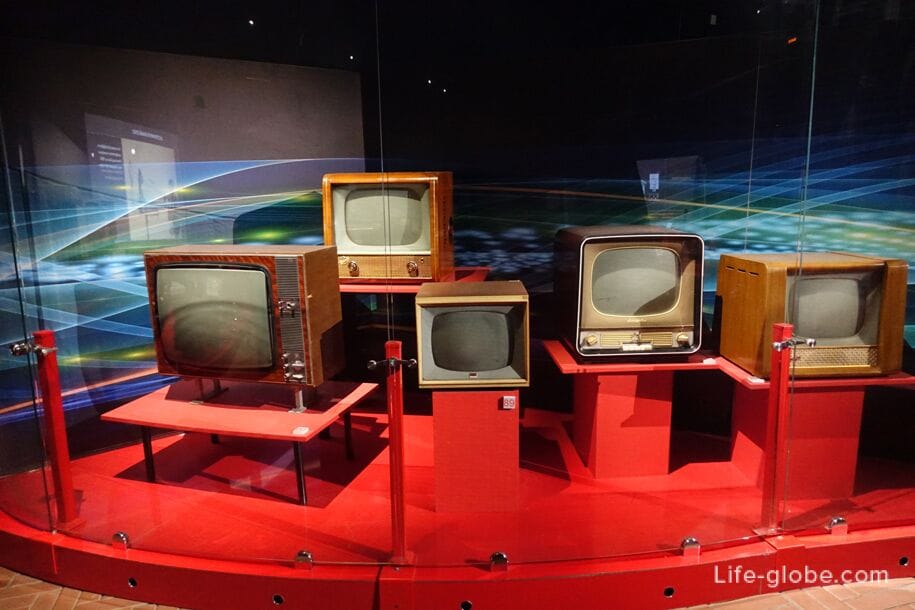
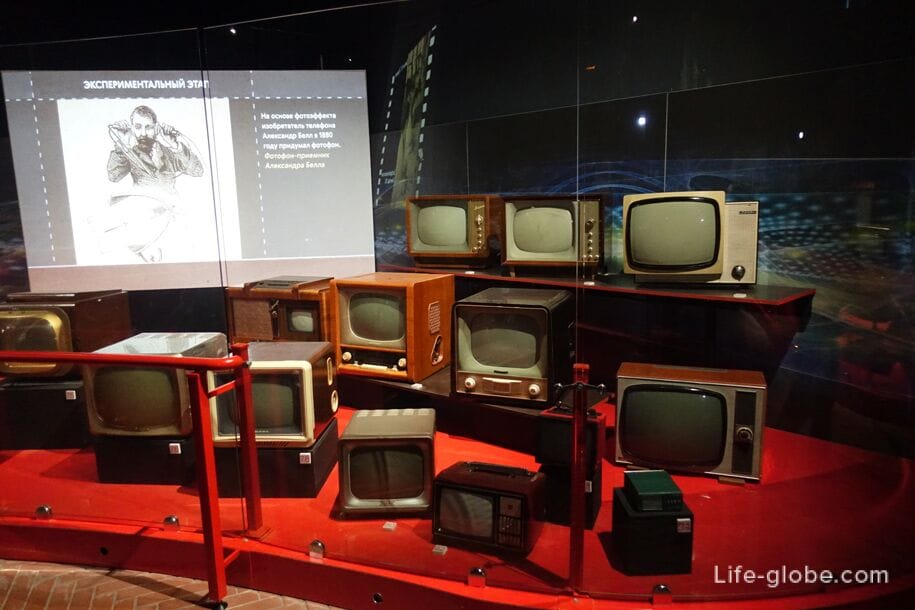
Sound Mirrors (interactive exhibit)
Sound is a mechanical vibration of the medium that propagates in the form of elastic waves and is perceived by the hearing organs. Like all waves, sound is reflected from objects. A good example of the reflection of sound waves is the echo.
Concave spherical surfaces "collect" sound well.
The museum presents a system of two parabolic dishes with concentrators at the ficus point - these are sound mirrors. Since the cymbals are located opposite each other and the space between them is free, then nothing prevents the collection, amplification, reflection and propagation of sound waves.
You can try to say something softly to the point where the hub of one of the dishes is located. And, if you have an interlocutor and he puts his ear to the hub of the opposite dish, then he will be able to hear what you said.

The section "Optics", which combines binoculars, spyglasses, microscopes, stereoscopes, slide projectors, cameras, movie cameras and movie projectors, reveals such concepts as: focal length, illumination, image distortion and combinations of color filters.
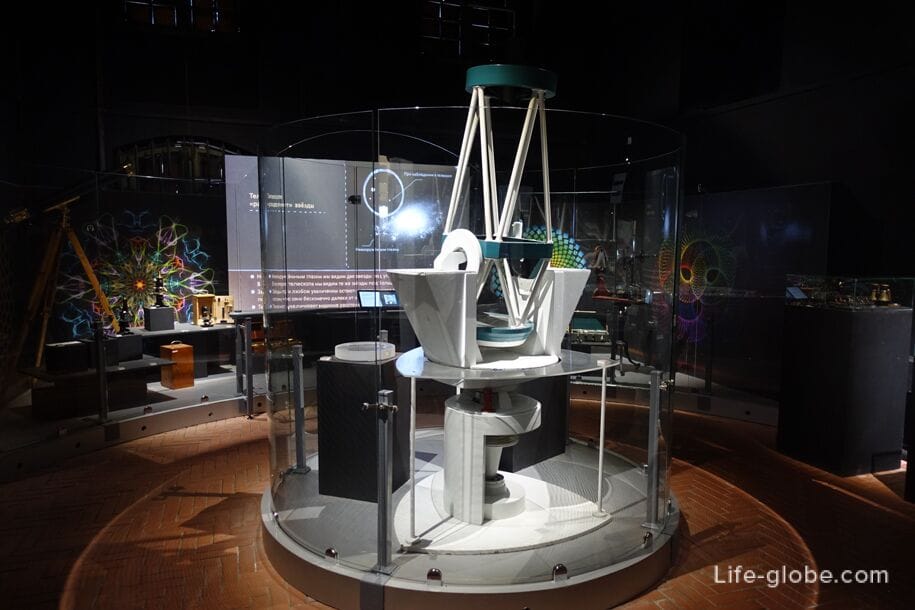

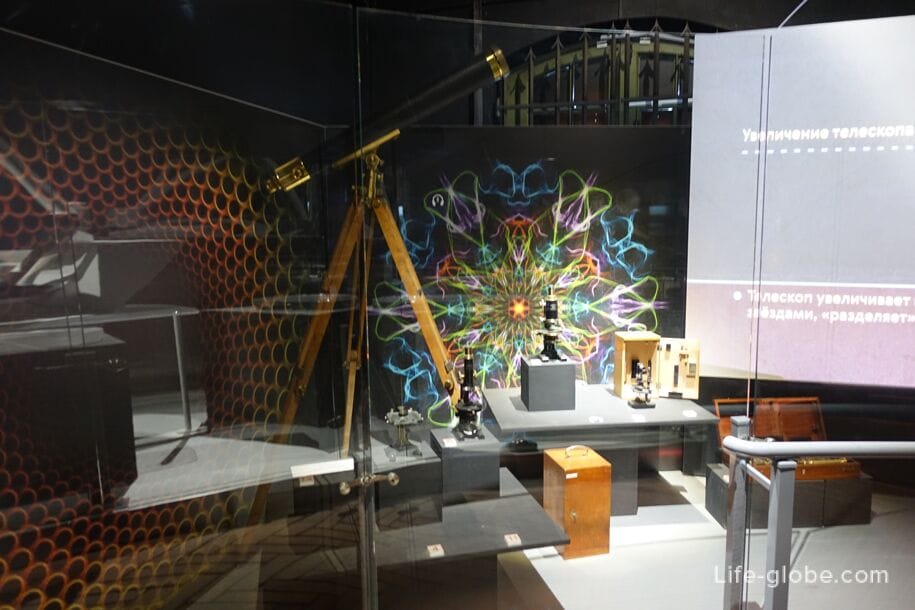
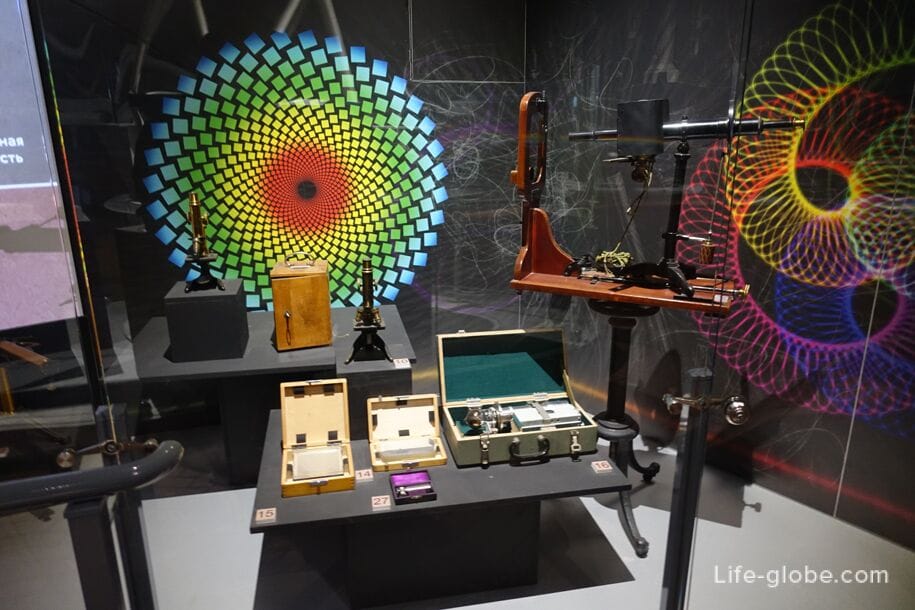
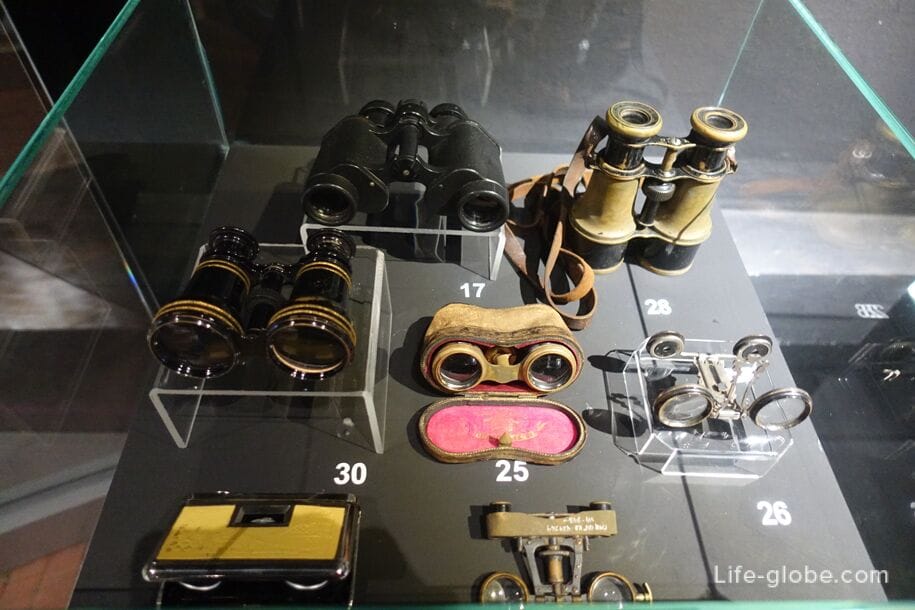
Water Lens (interactive exhibit)
A lens - a transparent body with one or two refractive surfaces-is an integral part of many optical devices.
The action of the lens is based on the phenomenon of light refraction at the boundary of two different media. Moving from air to a denser medium, such as water or glass, light waves slow down and change their direction of movement. Thus, parallel rays of light passing through a biconvex lens converge at a single point (focus).
In the museum, you can ask your companion or another visitor to the exhibition to take part in an experiment to see how a water lens works. If the observed person comes close to the lens, then we see him as usual, but as we move away along the optical axis, his image gradually increases against the natural size. Near the focus, the magnification reaches its maximum, and at the point of focus, the image blurs. If the observed object continues to move away, you will see its image again, but already inverted: first enlarged, it will gradually decrease.
Also, the observed person can see through the lens some of our changes.
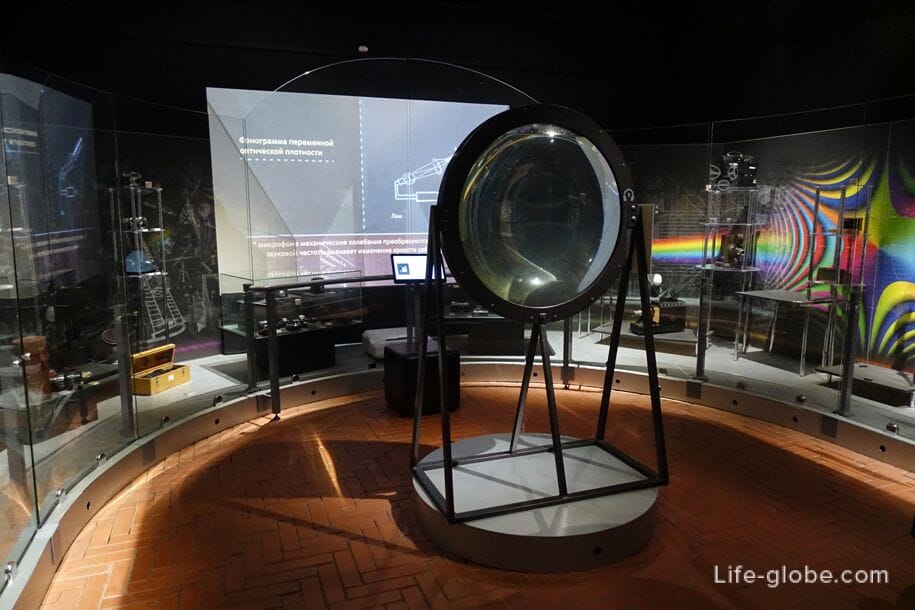
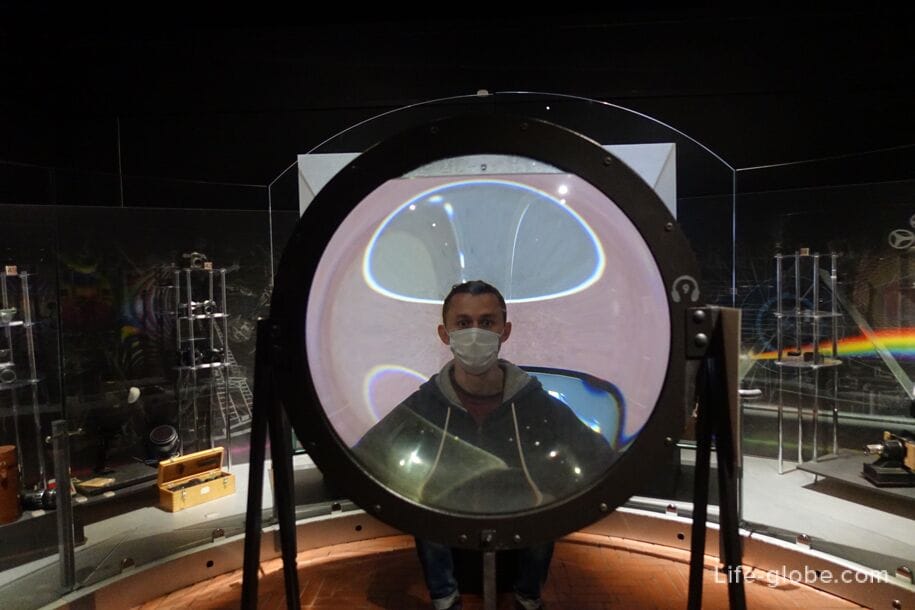

Entrance to the Museum of Science and Technology is paid. You can buy a ticket only to the museum or a complex ticket to visit other museums of the Peter and Paul Fortress, including Peter and Paul Cathedral with the Grand Ducal Tomb, Trubetskoy Bastion prison, as well as temporary exhibitions.
There are guided tours of the museum, which are included in the price of a separate or complex ticket.
The opening hours of the museum and museum tours, the cost and conditions of visiting, as well as other information, are recommended to check on the official website of the State Museum of the History of St. Petersburg, which includes most of the museums on the territory of the Peter and Paul Fortress, including the Museum of Science and Technology.
Museum website: spbmuseum.
The entrance to the territory of the Peter and Paul Fortress is free (free of charge).
Guided tours of the Peter and Paul Fortress
The museum is located in the south central part of the Peter and Paul Fortress, at the address: Peter and Paul Fortress, 3.
Nearest metro stations: "Gorkovskaya" and "Sportivnaya".
All accommodation facilities in Saint Petersburg, including in the city center and near the Peter and Paul Fortress, can be viewed and booked here